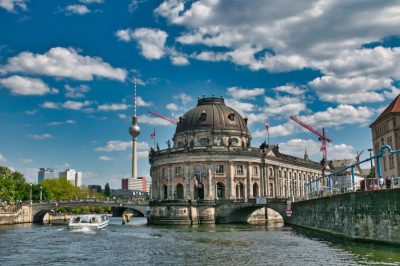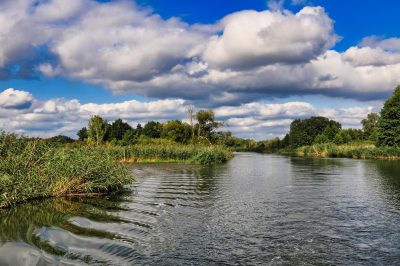Hardly any other object stood for the division of Germany and the Iron Curtain in Europe as much as the Berlin Wall (“Berliner Mauer” in German). Hypocritically called the “Anti-Fascist Protection Wall” by the GDR authorities, the border cut Berlin in two, separating districts, streets, houses and even families and friends. The fall of the Wall mmore than 30 years ago, finally heralded the collapse of communism in Europe. It is also symbolized by the masses who removed the Wall with pickaxes in the nights after November 9, 1989. Large parts of the Wall were demolished. However, even today there are still places where parts of the Wall stand and where the German division is remembered. We have therefore listed what is still left of the Berlin Wall today.
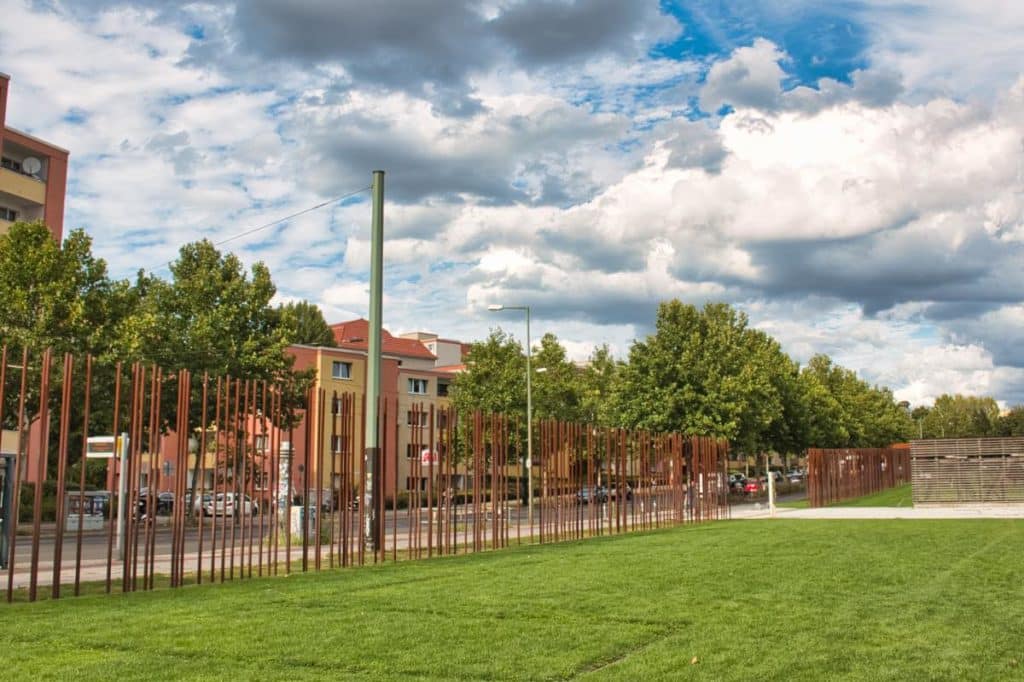
Berlin Wall Memorial
The Berlin Wall Memorial is one of the most important Berlin Wall sights today. In the open-air museum there are not only remains of the Berlin Wall and a watchtower. There are display boards with a lot of information about the border wall and the death strip. There are also many pictures showing the Wall before it fell. Of particular interest, however, is the replica of the Wall with a work of art made of iron bars. Today you can jump back and forth between the two sides where the border guards of the GDR used to stand. There is also an interesting exhibition and a lookout point in the visitor center.

Mauerpark
Where once the security strip of the Wall was located on East Berlin territory, many Berliners go for a walk today, especially on weekends. At Mauerpark, there are more than just a few graffiti-covered remnants of the Wall to see. On weekends, the local flea market is a magnet for visitors and thousands of people sit around the open-air stage and listen to the singers at the Mauerpark Karaoke. All that’s missing is someone singing “Wind of Change,” and the mood is perfect.
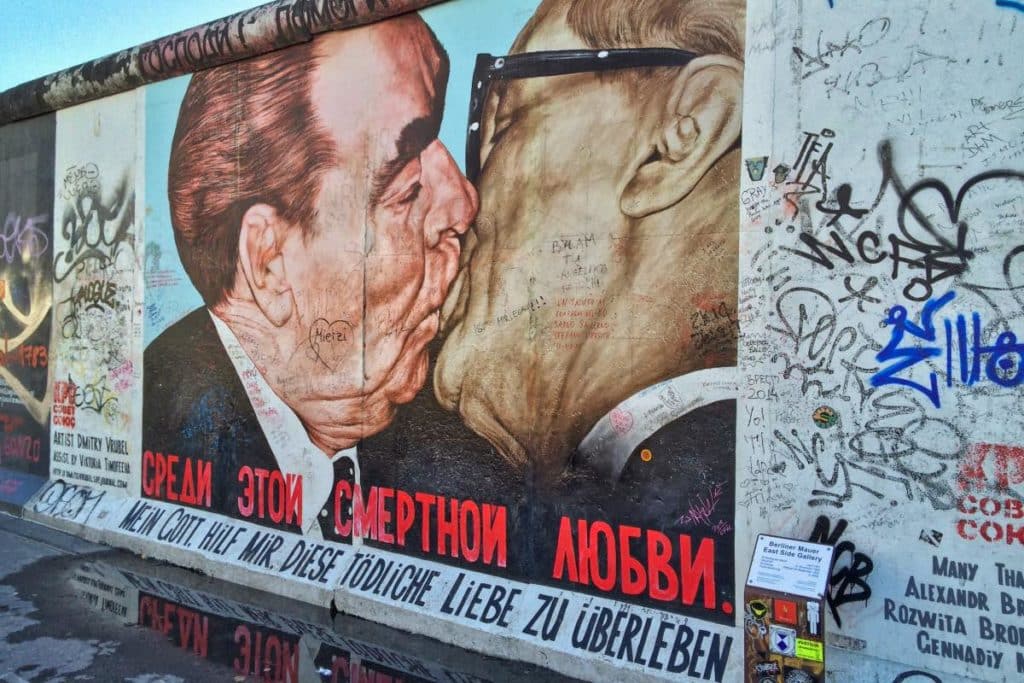
East Side Gallery
Not much is left of the Wall in Berlin – fortunately. The East Side Gallery between Ostbahnhof and Oberbaumbrücke used to shield parts of Friedrichshain from neighboring Kreuzberg. In the spring of 1990, parts of the Wall were torn down. At the East Side Gallery, it was decided to invite artists and let them create something to mark this historic event. 118 artists from 21 countries came. The result was what is now the largest open-air gallery in the world. Some of the artworks today stand iconically not only for the East Side Gallery, but as advertisements for the city of Berlin. Among the most famous and beautiful works are Dmitri Wrubel’s “My God, Help Me Survive This Fatal Love,” featuring the brotherly kiss of Honecker and Brezhnev, and Birgit Kinder’s “Test the Best.”
Bridges as Berlin Wall sights
Since Berlin is a city with a lot of water, the border between the Soviet occupation zone and the French, British and American sectors often ran through the water of rivers and canals. In this process, even old bridges that were supposed to connect the sides became barriers. The most famous bridges as Berlin Wall sights are:
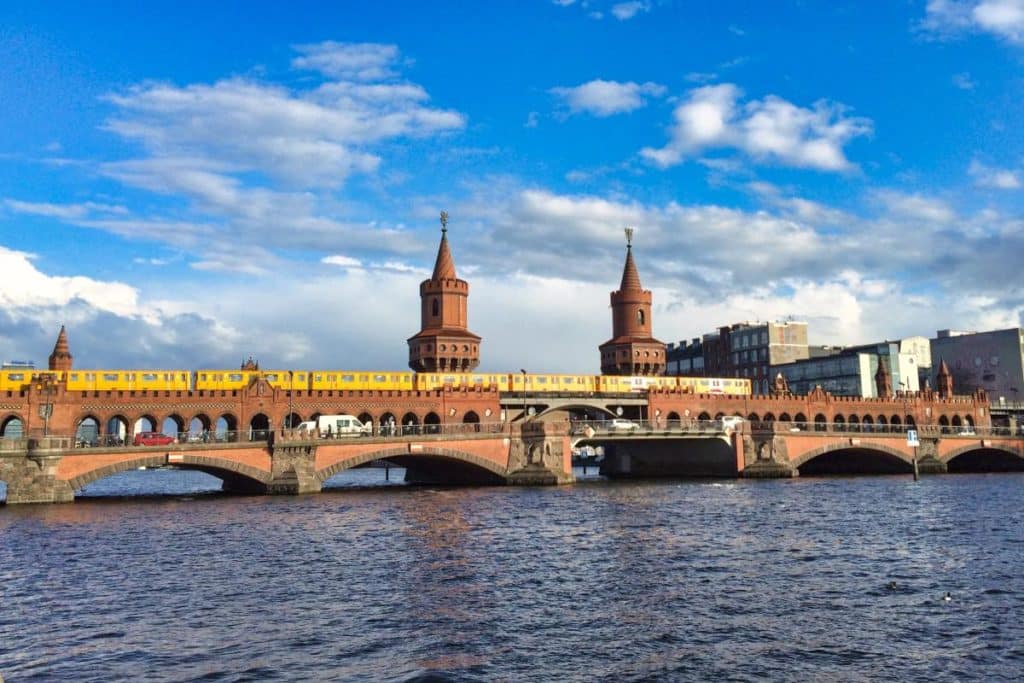
Oberbaum Bridge
The Oberbaum bridge is also a popular photo object and connects the south with the north bank of the Spree not far from the East Side Gallery, thus the districts Friedrichshain and Kreuzberg. At the end of the 19th century, under the then Berlin building council Otto Stahn, the building, executed by the Siemens company, was built in the neo-Gothic style, which brings a little medieval flair to this modern part of the city. In 1902, the first Berlin subway (today’s U1) already ran on the bridge here. You can also explore the Oberbaum bridge quite comfortably by strolling through the arcade, which looks like a medieval monastery.
Böse Bridge
The Böse Bridge was built as early as 1916 and originally bore the name of the later Reich President Paul von Hindenburg. After the war, the GDR authorities named it after the communist resistance fighter Wilhelm Böse. The Böse Bridge spans the tracks of the Berlin S-Bahn between the districts of Mitte and Wedding. As a result, the sector border ran here and the Böse Bridge became a border crossing after the Wall was built.
Escape attempts at the Böse Bridge
The bridge became famous due to three incidents. For example, the East Berlin transport policeman Hans-Dieter Wesa was murdered here by a colleague while trying to escape. In 1975, the cook of the Swiss embassy, Peter Gross, tried to smuggle his future wife Christa out via the diplomatic lane. They were caught and set free only three years later. And on November 9, 1989, the Bornholmer Strasse border crossing here was the first to allow GDR citizens to leave after Günter Schabowski’s declaration.
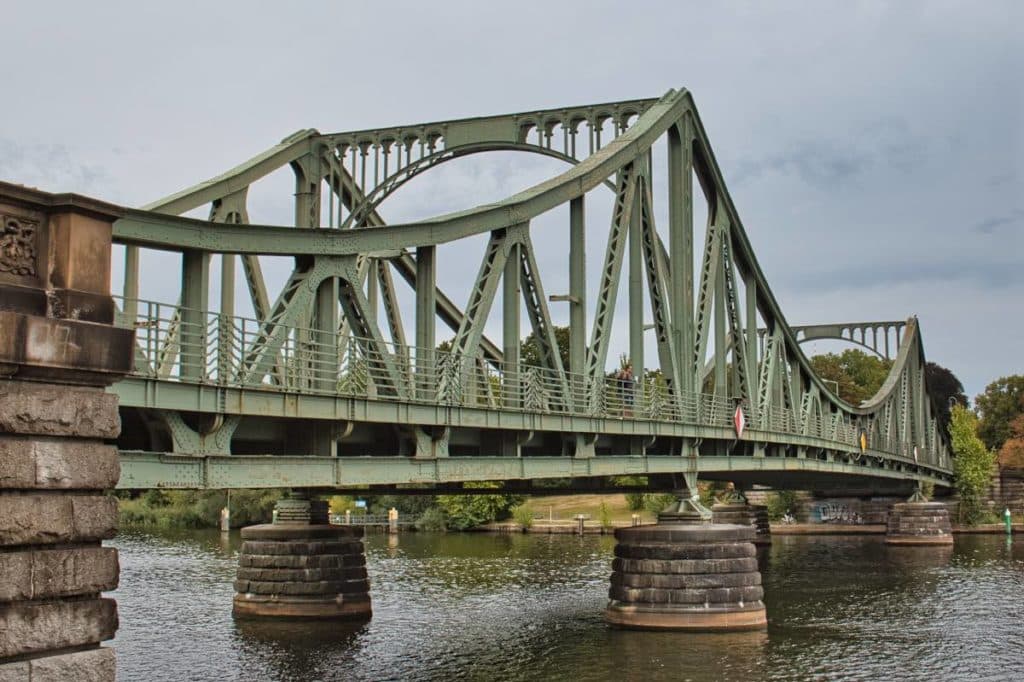
Glienicke Bridge
Since West Berlin bordered Potsdam to the west, there was also an inner-German border here. The Glienicke Bridge has become particularly famous, because during the Cold War exchanges of spies, agents and political prisoners often took place here. During the war, the bridge had been destroyed, but by 1947 it had been rebuilt. Ironically, the GDR authorities renamed it the Bridge of Unity in 1949.
A Bridge for exchanging spies
However, due to the construction of the Wall in 1961, it became a symbol of division. Here, in February 1962, the Soviet spy Rudolf Ivanovich Abel was exchanged for Francis Gary Powers. Powers had been shot down in a U2 over the Soviet Union. The bridge was thus also given the title “Bridge of Spies” as in the film of the same name by Steven Spielberg starring Tom Hanks. After the fall of communism, a monument was erected here.
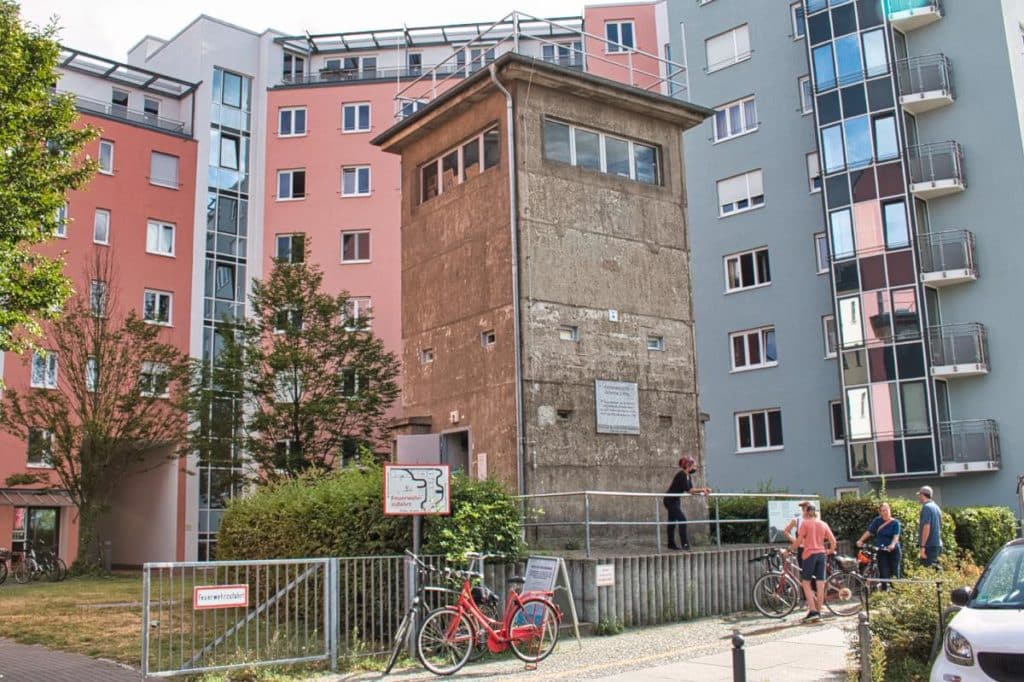
Wall Watchtower Memorial Günter Litfin
The Günter Litfin Memorial is located in a former command post of the GDR border troops in Berlin-Mitte district. There were 280 watchtowers along the Berlin Wall. In the command posts, it was ensured that no GDR citizen could escape. Shortly after the Wall was built, on August 24, 1961, Günter Litfin tried to escape nearby. He could no longer go to his job in West Berlin and despised the GDR. During his escape, he was discovered and shot by transport police officers. After the fall of the Wall, his brother Jürgen campaigned for the watchtower to be preserved as a memorial. That is why today it bears the name of Günter Litfin. Inside, you can learn more about the Wall victims and the border installations.

Checkpoint Charlie
As a crossing point, initially only for the Allied control missions, later also as a border crossing, Checkpoint Charlie was also an important site of the Berlin Wall. Today it is one of the most famous Berlin Wall landmarks. Here, after the erection of the Berlin Wall, there was a confrontation of Soviet and American tanks. The pictures of it went around the world and showed how close the Cold War was to a hot war. At Checkpoint Charlie, the first person to die at the Wall was killed. Peter Fechter bled to death before the eyes of Western observers. A memorial stone at Zimmerstrasse 1 commemorates him. Today, millions of tourists come and have their pictures taken in front of the American control barracks. The Wall Museum provides information about the Wall.
Parliament of Trees
The Parliament of Trees has been a memorial to the dead of the Berlin Wall in the immediate vicinity of the Reichstag since November 1990. Their names are listed on granite plaques. Where the death strip once ran, artist Ben Wagin arranged memorial stones, pictures, posters and parts of the border fortifications. The site can be visited permanently and has been a listed monument since 2017.
Checkpoint Bravo – Dreilinden customs checkpoint
Even today, the former Allied Checkpoint Bravo is one of the most visible Berlin Wall sights. Almost everyone who travels to Berlin by car or bus passes the former Dreilinden checkpoint. Since the West Berlin autobahn ran through GDR territory, the SED authorities relocated the autobahn, now called the A115, until 1969. The checkpoint on the autobahn was designed by West Berlin Senate Building Director Rainer Rümmler between 1969 and 1972. The checkpoint and part of the former Wall construction nearby are still preserved today. If you’re traveling to Berlin by car, it’s worth making a quick stop here.
Potsdamer Platz
Potsdamer Platz was one of the centers of Berlin in the twenties. Here once stood even the first traffic light in the world. Heavily destroyed during the war, the Wall was built across the square in 1961. The area lay fallow until the fall of the Wall. It was not until the end of the 1990s that the modern high-rise buildings were erected and an entire neighborhood was created. Today, a small piece of the Wall at the large intersection and at the entrance to the formerly closed S-Bahn station reminds us of the history of the place and what it looked like here before the fall of the Wall.
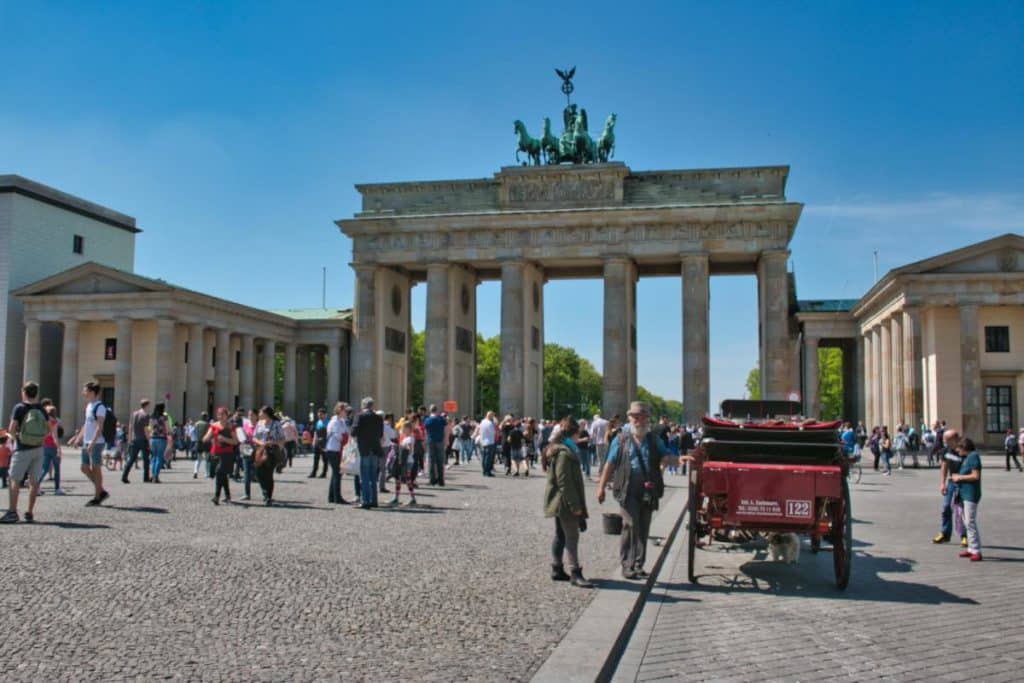
Brandenburg Gate
Hardly any other place symbolized the division as much as the Brandenburg Gate. Right next to the boulevard Unter den Linden ran the inner-German border. Many pictures from the time of reunification remind us of this fact. Between 1961 and 1989, Berliners could only see the Brandenburg Gate from their side. Unfortunately, the Quadriga only showed its backside to the West-Berliners. Visitors to West Berlin, on the other hand, stood on viewing platforms right next to the Wall and watched the scenery in East Berlin as if they were visiting a zoo. Fortunately, the division ended in 1989 and the scenes of people on the Wall directly at the Brandenburg Gate are now among the icons of the so called “Wende”, the time of change.
Topography of Terror
Where the headquarters of the SS, SD and the Reich Security Main Office were located during the Third Reich, the Wall ran during the division of Germany. Today’s Documentation Center is also a reminder that the division of Germany would never have existed without National Socialism and the Second World War it caused. In this respect, this piece of the Wall is also a reminder of the origins of this catastrophe.
Berlin Wall Trail – Explore the Berlin Wall today on the Berlin Wall Cycle Path
The Berlin Wall Trail follows the course of the former death strip around West Berlin. Over a total of 160 kilometers, there are 40 stations here that provide information about the border installations, the border troops, the Wall’s dead and other important testimonies to the division of Germany. The Wall Trail is continuous and can therefore be completed as part of a bicycle tour. Here you will see all the important Berlin Wall sights and learn much more about the history of Berlin in the 20th century than many other visitors to the city.
Book recommendations
You want to learn more about the Berlin Wall? Then maybe our book tips on the subject will help you.
No products found.
Recently updated book about the Berlin Wall. On more than 500 pages it allows a deep inside view of the Wall and those dark times
No products found.
A critically acclaimed biography of the Checkpoint Charlie and the division of the city
No products found.
The bilingual book leads to the Berlin Wall sights and memorials.


